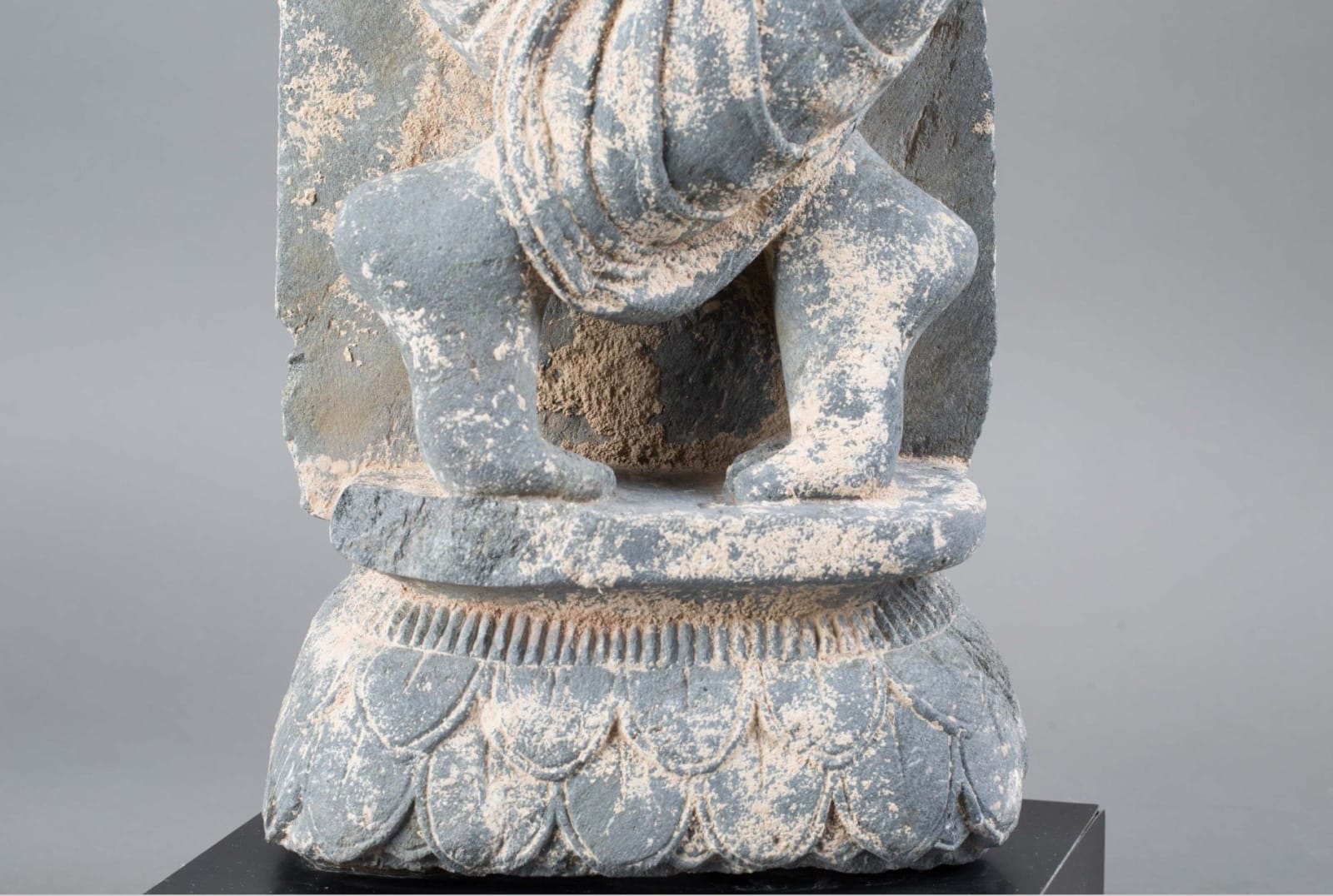Gandhara Grey Schist Figure of a Yakshi, 200 CE - 400 CE
Further images
Gandhara’s geographical position, situated between the Persian world to the west and the Indian to the east, ensured that it was open to a wide variety of artistic influences. Often...
Gandhara’s geographical position, situated between the Persian world to the west and the Indian to the east, ensured that it was open to a wide variety of artistic influences. Often described as a ‘cultural melting pot,’ its strategic importance left it vulnerable to attack. Briefly in the hands of Alexander the Great between 327 -326 B.C., Greek artistic conventions long played an important role in local production. However whilst Gandhara clearly came under the influence of an extraordinary wide range of outside influences, it was also an exporter of ideas. This is most apparent in relation to the spread of Buddhism from India into other parts of Asia. Gandharan monks and scribes were particularly active in areas of China. According to tradition Buddhism was first introduced into the Gandharan region under the patronage of Asoka, emperor of the Mauryan dynasty, in the third century B.C. The first significant physical remains to survive, including stupas and figurative sculpture, date from the first century B.C. Between c.100-400 A.D. sculptors working in schist, terracotta and stucco produced an astonishing number and variety of Buddhist images.
The yakshi portrayed here is cleverly incorporated into the form of a column, the capital of which takes the form of a leafy tree. Standing with legs crossed on a lotus base, she wears a pleated sari held together by an elaborate belt, necklace, shawl, and breast wrapper, a traditional gesture in sculptures of yakshi. She has a serene facial expression, with arched eyebrows above lidded eyes, an aquiline nose, smiling lips, elongated earlobes with ear rings. The yakshi's three-bend pose (tribanga), bending at her neck, waist, and hips, is a stance that suggests a sensuous liveliness and maternal energy. This representation also shows the figure adorned with jewelry and the suggestion of a transparent skirt, revealing an abundantly endowed female body that symbolizes the fertility of the earth.
A yakshi is a female earth spirit, accepted as a symbol of fertility by the Hindu, Buddhist, and Jain faiths. She is usually portrayed as a wide-hipped, voluptuous woman, who can cause a tree to bear fruit simply by touching it with her foot. Sculptures of yakshi are often seen in elaborate architectural motifs on the façades of temples and stupas. The earliest examples of Yakshi figures can be traced back to the narrative reliefs of the Sanchi and Bharhut Stupa, which are widely considered as the prototype which inspires all later Buddhist female figures.
The yakshi portrayed here is cleverly incorporated into the form of a column, the capital of which takes the form of a leafy tree. Standing with legs crossed on a lotus base, she wears a pleated sari held together by an elaborate belt, necklace, shawl, and breast wrapper, a traditional gesture in sculptures of yakshi. She has a serene facial expression, with arched eyebrows above lidded eyes, an aquiline nose, smiling lips, elongated earlobes with ear rings. The yakshi's three-bend pose (tribanga), bending at her neck, waist, and hips, is a stance that suggests a sensuous liveliness and maternal energy. This representation also shows the figure adorned with jewelry and the suggestion of a transparent skirt, revealing an abundantly endowed female body that symbolizes the fertility of the earth.
A yakshi is a female earth spirit, accepted as a symbol of fertility by the Hindu, Buddhist, and Jain faiths. She is usually portrayed as a wide-hipped, voluptuous woman, who can cause a tree to bear fruit simply by touching it with her foot. Sculptures of yakshi are often seen in elaborate architectural motifs on the façades of temples and stupas. The earliest examples of Yakshi figures can be traced back to the narrative reliefs of the Sanchi and Bharhut Stupa, which are widely considered as the prototype which inspires all later Buddhist female figures.











